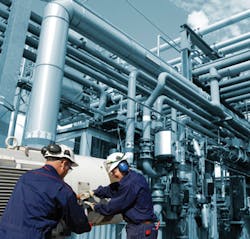Safety Assessments: 3 Questions to Ask First
How does your company measure safety performance? Do you measure safety as the absence of injuries or the reduction of risk?
The definition of safety performance is what is expected versus what is accepted by the company’s leadership, supervisors and employees. If your facility accepts mediocre attempts at functional and process safety solutions and you are telling your employees “this is the norm,” it brings about a sense of false security. One accident and your company can be faced with skyrocketing worker’s-comp premiums and OSHA fines if the safety solution is not designed and implemented correctly.
Too often, manufacturers believe they are safe simply because there is already some sort of safety device or devices in place or no one has been hurt on the existing equipment. We have all heard, “We’ve had this piece of equipment for 20 years, and no one has gotten hurt!” Simply crossing your fingers and hoping nothing will ever happen is the absolute wrong approach. The correct approach is to conduct a safety risk analysis and see where any safety issues may arise.
Risk, by definition, is the chance or likelihood that someone or something could be harmed or damaged by the hazard, together with an indication of how serious the harm or damage could be. Risk is usually a combination of the likelihood of occurrence and the consequences: How likely is this to happen? How serious could it be?
Risk assessment is the process of identifying hazards related to environment, health and safety that are intrinsic properties of work-related activities and determining both the likelihood that the hazard will lead to a loss and the severity of that potential loss. The results of likelihood and severity are combined according to an agreed-upon rule to give a single measure of potential risk.
Simply put, a risk assessment is a careful examination of what, in your workplace, could cause harm or damage to people, property or the environment. You can then decide if you have taken enough precautions or should do more to prevent any harm or damage from happening.
Too often, as managers and leaders, we ask simple questions and work at complex answers. When thinking about functional and process safety, first ask some simple questions:
- Are we doing the best we can to protect the people that we value—our “greatest asset?”
- If we aren’t, how much are we willing to spend to eliminate the hazard or defend ourselves in court?
- What questions are we prepared to answer from a news reporter or from a family member?
Now come up with simple answers.
Stephen Blank is chief executive officer and Rick Carpenter is functional safety manager at Loman Control Systems Inc., based in Lititz, Pa. Loman Controls is a Certified member of the Control System Integrators Association.

